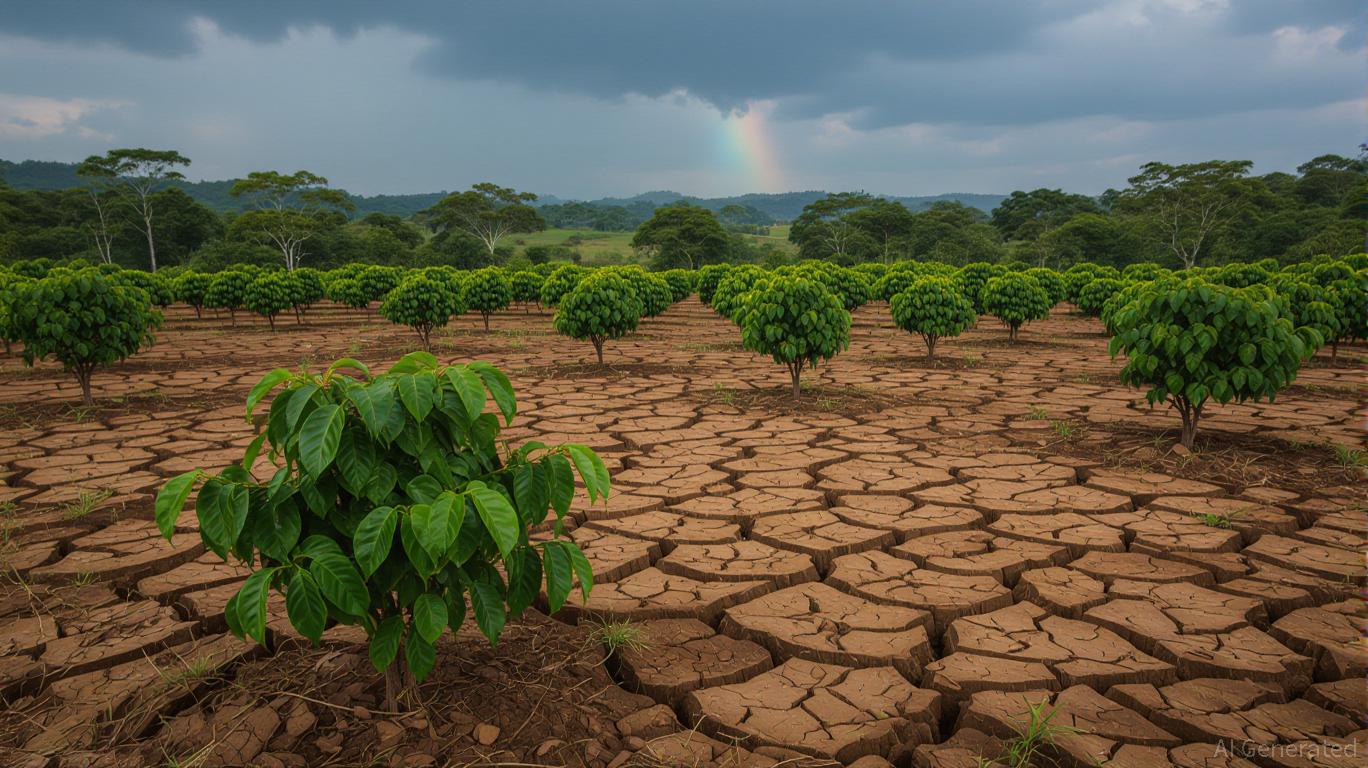
The global coffee market has become a microcosm of the broader challenges facing agricultural commodities in the 21st century. Arabica coffee, the world’s most prized bean, has seen its price trajectory shaped by a perfect storm of climate anomalies, geopolitical trade wars, and policy shifts. For investors, this volatility is not a barrier but an opportunity—a chance to capitalize on a sector where supply constraints and tariff disruptions are rewriting the rules of risk and reward.
Climate as the New Market Driver
From 2022 to 2025, Arabica prices have swung between extremes, peaking at $4.40 per pound in early 2025—a 48-year high. The root cause? Climate-driven supply shocks. Brazil, which produces 40% of the world’s Arabica, has faced consecutive years of drought and heatwaves, slashing its 2024 crop forecasts. Meanwhile, Vietnam’s robusta output dropped 20% in 2023/24 due to prolonged dry spells, while Indonesia’s robusta production fell 16.5% from excessive rainfall. These disruptions have not only tightened global coffee reserves but also erased the historical price gap between robusta and Arabica, a trend last seen in the 1980s.
The International Coffee Organization (ICO) reports that the composite coffee price index surged 129% from 2023 to 2025, driven by a 69% year-on-year increase in Arabica prices. Climate scientists warn that without adaptation, suitable coffee-growing regions could shrink by 50% by 2050. This creates a long-term tailwind for Arabica futures, as demand for climate-resilient beans grows and supply chains become increasingly fragile.
Geopolitical Tariffs: A Double-Edged Sword
While climate sets the stage, geopolitical policies have amplified the chaos. The Trump administration’s 2024 tariffs—50% on Brazilian coffee and 20% on Vietnamese exports—forced U.S. importers to scramble for alternative suppliers. Companies like Copper Cow, a specialty coffee brand reliant on Vietnamese organic beans, were forced to scale back investments, illustrating how tariffs can disrupt not just prices but entire business models.
The EU’s deforestation-free import rules, though postponed, also triggered panic buying in 2024, further tightening global reserves. These policies highlight a critical investment insight: geopolitical tailwinds are no longer isolated events but persistent forces reshaping commodity markets. For Arabica, the result is a market where trade barriers act as both a shock absorber and a catalyst for price spikes.
Market Dynamics: Volatility as a Feature, Not a Bug
As of Q2 2025, Arabica futures have retreated to the high $3 range, but the USDA’s projection of a modest global surplus for 2024/25 hinges on Vietnam and Indonesia’s production recovery. However, El Niño’s return threatens to derail these hopes, with forecasts predicting drier-than-average conditions in Brazil and Vietnam. This uncertainty keeps the market in a state of flux, where even minor weather deviations could trigger another price surge.
For investors, this volatility is a feature, not a bug. The key lies in hedging against supply-side risks while positioning for long-term structural trends. Here’s how:
Arabica Futures as a Core Holding: With prices trading near multi-decade highs and production risks persisting, Arabica futures offer a direct play on supply constraints. The current low global reserves (at 12-month lows) mean even a modest production shortfall could trigger a 20%+ price spike. Climate-Resilient AgTech Plays: Companies developing drought-resistant coffee varieties or digital farming tools (e.g., satellite monitoring for crop health) are poised to benefit from the industry’s adaptation push. Tariff-Resilient Sourcing Strategies: Investors should favor coffee producers with diversified supply chains or those investing in U.S.-grown Arabica, which could gain market share as tariffs on traditional suppliers persist. The Road Ahead: A Market in Transition
The coming months will test the resilience of the global coffee market. If Brazil’s 2025 harvest fails to recover, prices could retest $4.40 per pound. Conversely, a rebound in Vietnam and Indonesia’s production could stabilize prices by late 2025. However, the structural shift toward climate resilience and geopolitical fragmentation suggests that Arabica’s volatility is here to stay.
For investors, the lesson is clear: in a world where climate and geopolitics dictate commodity prices, adaptability is the only constant. Arabica coffee futures are not just a bet on beans—they’re a bet on the future of global agriculture in an era of unprecedented disruption.
